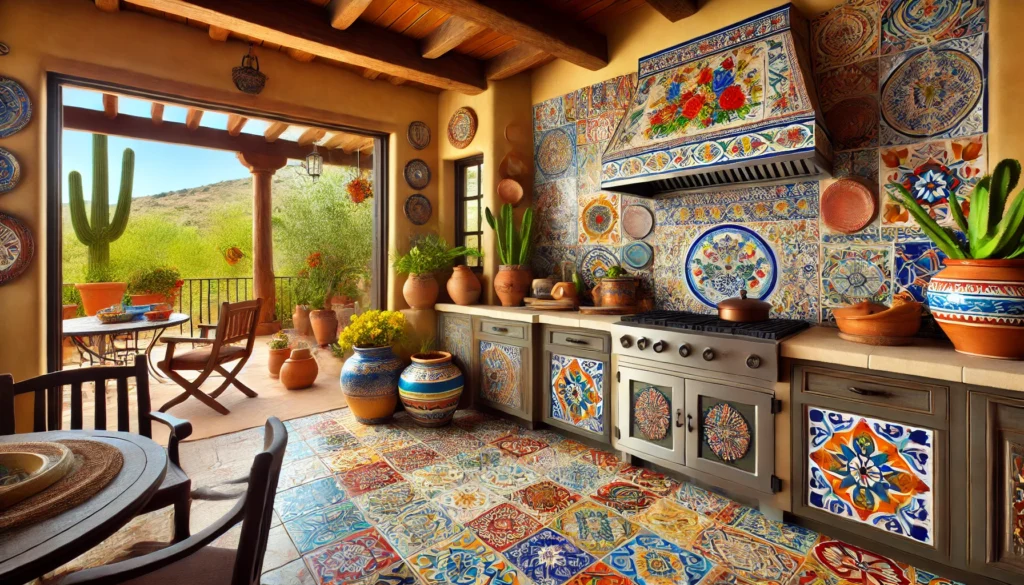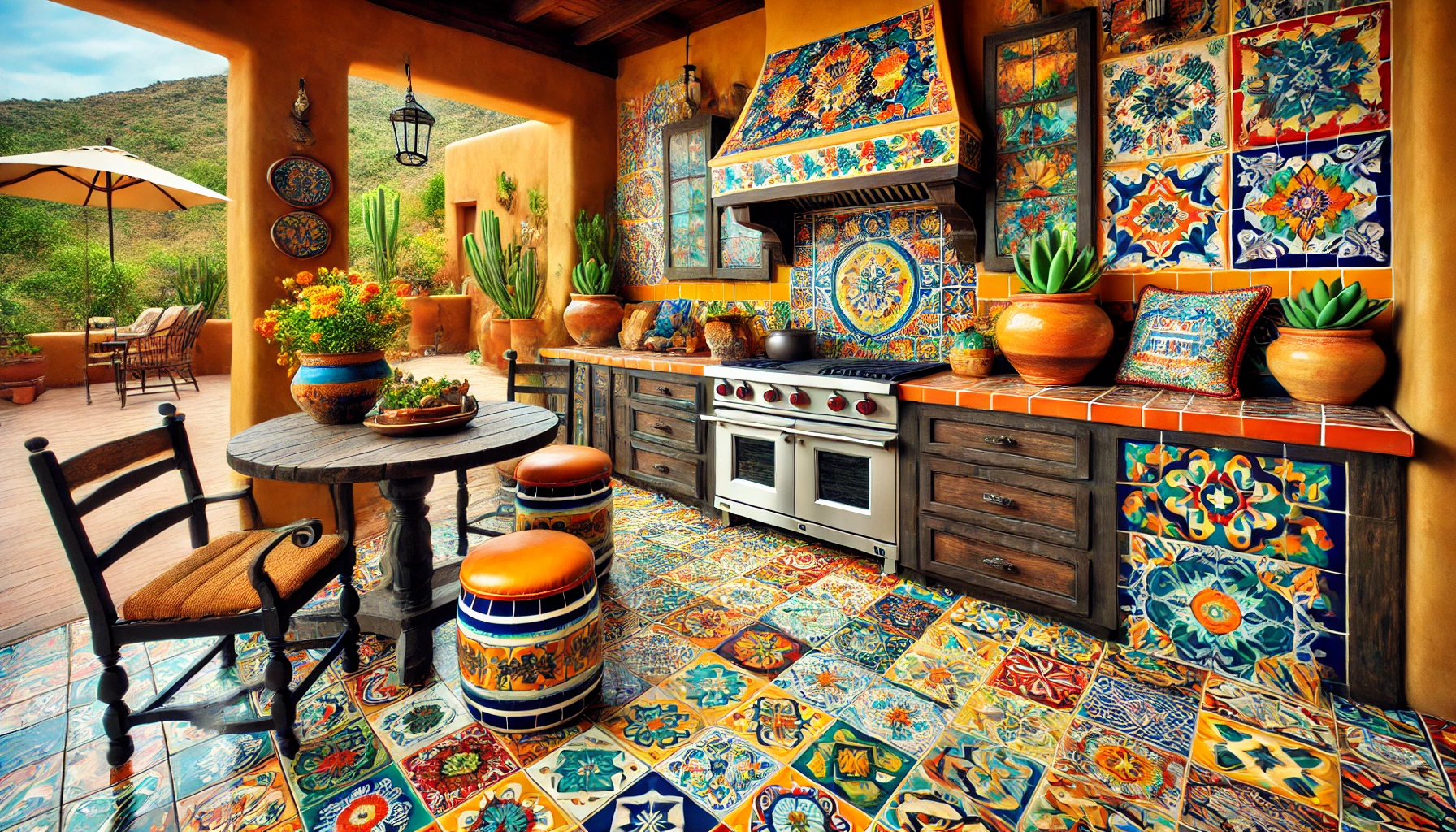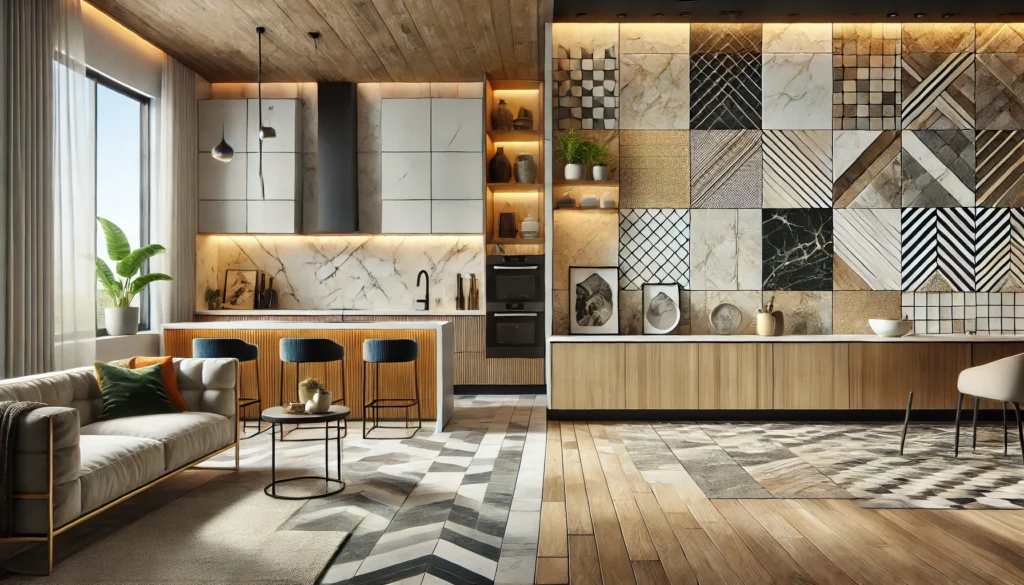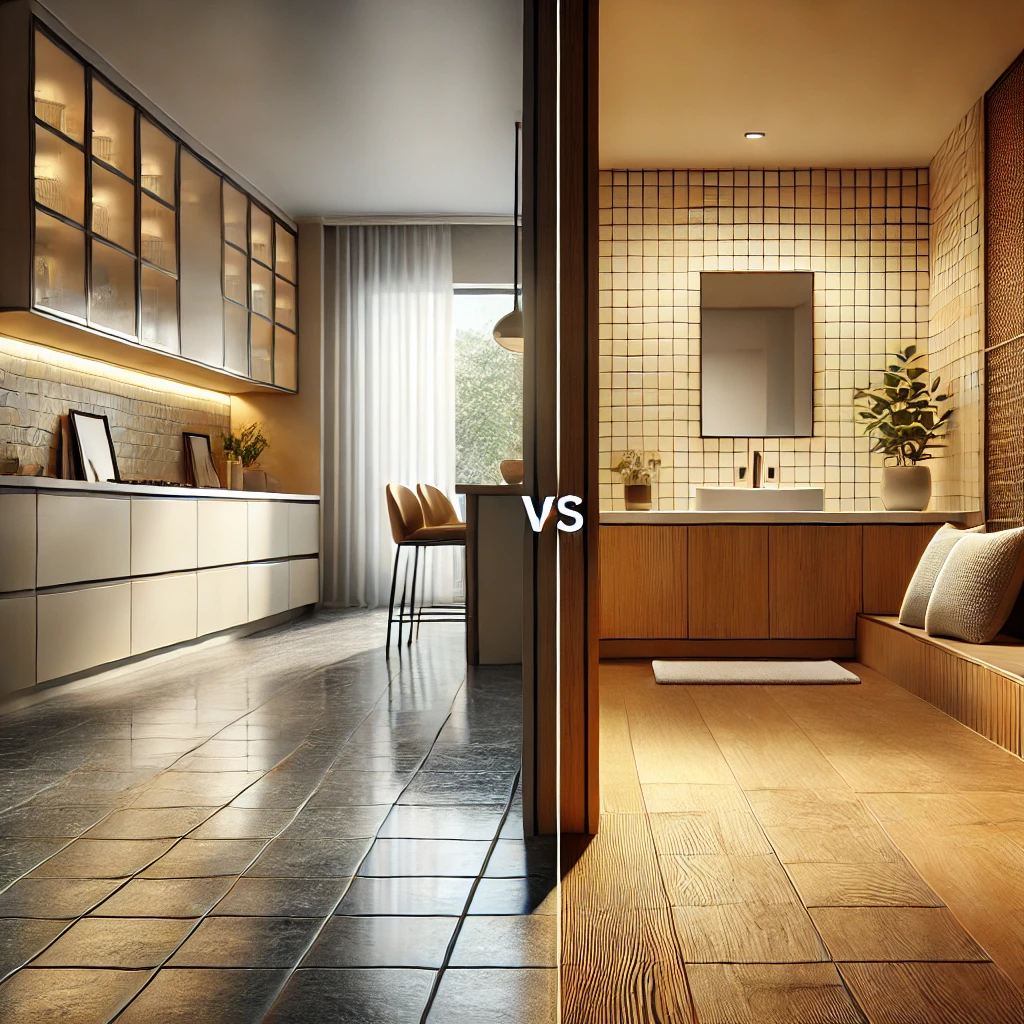Introduction: Why Mexican Talavera Tiles Are Perfect for Southwest Spaces
Picture this: you walk into your kitchen, and the walls burst with color—hand-painted tiles in earthy reds, sunny yellows, and deep blues, each one telling a story of tradition and artistry. Or maybe you step onto your patio, where vibrant patterns underfoot make you feel like you’re sipping margaritas in a Mexican plaza. That’s the magic of Mexican Talavera tiles. These beauties aren’t just decor—they’re a vibe, a lifestyle, a way to bring Southwest charm right into your home.
So, why are Talavera tiles the secret sauce for Southwest kitchens and patios? It’s all about their soul. Born in Puebla, Mexico, these handcrafted ceramic tiles blend Spanish and indigenous influences into something uniquely vibrant. They fit the Southwest aesthetic like a glove—think desert sunsets, rustic charm, and a touch of cultural flair. In this guide, I’m spilling all the beans: what they are, why they work, and how you can use them to transform your space. Ready to add some color to your life? Let’s dive in!
What Are Talavera Tiles?
Talavera tiles are ceramic tiles handmade by artisans, known for their intricate designs and bold colors. Each tile starts as clay, gets shaped, glazed, and painted by hand—making every piece a mini masterpiece. Authentic ones come from Puebla and are certified by the Mexican government to ensure quality. They’re not just pretty; they’re tough enough for kitchens, patios, and anywhere you want a splash of personality.
The History and Tradition Behind Talavera Tiles
Let’s take a quick history trip. Back in the 16th century, Spanish settlers brought tile-making to Mexico, where it mixed with local techniques. The result? Talavera tiles—a fusion of Old World precision and New World creativity. Today, over 300 workshops in Puebla keep this craft alive, producing tiles that are as much art as they are function. Ever wonder why they feel so special? It’s centuries of love baked into every piece.
Why Talavera Tiles Fit Southwest Aesthetics
Southwest design is all about warmth—think adobe walls, wooden beams, and colors that echo the desert. Mexican Talavera tiles nail this vibe with their earthy tones (terracotta, turquoise, mustard) and organic patterns. They’re like the chili powder in your favorite recipe—just the right kick to make your Southwest kitchen design or patio decor pop. Whether you’re in Tucson or Taos, these tiles bring authenticity home.

The Problem: Challenges in Designing Authentic Southwest Spaces
Okay, let’s get real. Creating a Southwest space that feels legit isn’t all sunshine and cactus dreams. Ever tried using Talavera tiles and ended up with a room that looks more like a tourist trap than a cozy retreat? You’re not alone. Designing with these vibrant tiles can be tricky—here’s why.
Common Mistakes in Using Talavera Tiles
- Overdoing it: Slapping tiles on every surface until your space screams chaos.
- Color clashes: Picking hues that fight your decor instead of flowing with it.
- Fakes: Grabbing cheap knockoffs that fade fast and lack soul.
- No plan: Tossing tiles in without a vision, leaving your design disjointed.
Sound familiar? These slip-ups can turn your dream project into a headache.
Balancing Vibrancy with Cohesion
Here’s the rub: Talavera tiles are bold. Too much boldness, and your kitchen or patio feels like a circus. How do you keep the vibrancy without losing harmony? It’s about focus—using tiles as accents (like a backsplash or floor border) while letting simpler elements (wood, plaster) play backup. Think of it like decorating a cake: the tiles are the icing, not the whole batter.
Solutions: How to Use Talavera Tiles Effectively
Good news—you don’t need a design degree to make Mexican Talavera tiles work. Let’s break down some foolproof ways to weave them into your Southwest kitchen design or patio decor.
Choosing the Right Colors and Patterns
Start with colors that vibe with the Southwest. Earthy tones—terracotta, turquoise, mustard yellow—are your best friends. Patterns? Go for classics like florals or geometrics. Here’s a checklist:
- Pick 2-3 colors: Repeat them in your decor (rugs, curtains) for unity.
- Accent, don’t overwhelm: Use patterned hand-painted tiles sparingly—think backsplash or stair risers.
- Test first: Grab samples to see how they play with your lighting.
Why it works: 82% of homeowners surveyed by Houzz in 2024 said a cohesive color scheme made their tile projects shine.
Best Practices for Kitchen Installations
Kitchens are prime Talavera tile territory. Here’s how to nail it:
- Backsplash: A colorful strip behind your stove or sink—easy to clean, big on impact.
- Countertops: Durable and stylish, perfect for a rustic Southwest look.
- Flooring: Larger tiles (12×12 or more) make small kitchens feel bigger.
Worried about spills? These tiles wipe down with soap and water—no fuss.
Enhancing Patios with Talavera Tiles
Your patio deserves love too. Try these:
- Flooring: Mimic a Mexican courtyard with bold patterns.
- Accent Walls: A tiled wall as a backdrop for dining or lounging.
- Stair Risers: Add color to steps for a fun twist.
Seal outdoor tiles to keep them weatherproof—think of it as sunscreen for your patio decor.
Combining Talavera with Other Materials
Mixing is key. Pair Talavera tiles with:
- Wood: Warm beams or tables for contrast.
- Wrought Iron: Railings or furniture for that Southwest edge.
- Adobe: Walls or planters for texture.
Example: A wooden kitchen island with Talavera inlays—stunning and practical.
Real-World Examples: Stunning Southwest Designs
Need inspiration? These real-life wins show Mexican Talavera tiles in action.
Case Study: A Vibrant Southwest Kitchen
In Santa Fe, a couple revamped their drab kitchen in 2023. They chose blue-and-white Talavera tiles for a backsplash, paired with oak cabinets. Cost: $10,000. Result: A space that’s modern yet rooted in tradition. “It’s like cooking in a gallery,” they said.
Case Study: A Cozy Patio Oasis
A Tucson family turned their boring patio into a retreat with hand-painted tiles. Large geometric tiles covered the floor, and a tiled fountain became the star. Total spend: $8,500. Now, it’s their go-to spot for BBQs and stargazing.
Before and After: Transformations with Talavera Tiles
Check this out: a bland Phoenix kitchen got a facelift with a Talavera tile backsplash and countertop. Before? Beige and boring. After? A colorful hub that screams Southwest charm. The homeowner raved, “It’s my happy place now.”
Advanced Tips: Elevating Your Design with Talavera Tiles
Ready to level up? These pro tips will make your Southwest kitchen design or patio decor next-level awesome.
Mixing and Matching Patterns
Don’t shy away from variety. Mix floral and geometric Talavera tiles—just keep colors consistent. Example: blue florals with blue grids. It’s like a playlist—different tracks, same vibe.
Maintenance and Care for Longevity
Keep those tiles popping:
- Cleaning: Mild soap, soft cloth—no harsh stuff.
- Sealing: Every 1-2 years for outdoor tiles.
- Spills: Blot, don’t scrub, to save the glaze.
Sourcing Authentic Talavera Tiles
Go legit. Buy from Puebla-sourced suppliers with authenticity certificates. Skip mass-produced fakes—they’re like fast food versus a home-cooked meal.
DIY Projects with Talavera Tiles
Get crafty:
- Coasters: Glue small tiles to cork.
- Tabletops: Mosaic a coffee table.
- Planters: Tile a pot for patio flair.
Conclusion: Bringing Southwest Charm Home
Mexican Talavera tiles are more than decor—they’re a love letter to culture and color. Whether you’re jazzing up a kitchen or turning your patio into an oasis, these tiles deliver Southwest charm with every vibrant hue. So, what’s stopping you? Grab some tiles, dream big, and make your space a masterpiece.
Call to Action: Ready to start? Check out authentic Talavera tiles at [Supplier Name] or [Supplier Name]. Share your project pics—I’d love to see your Southwest glow-up!
FAQs: Your Burning Questions Answered
FAQ 1: Are Talavera Tiles Suitable for Outdoor Use?
Yes! Seal them to handle rain, sun, and frost—perfect for patio decor.
FAQ 2: How Do I Clean and Maintain Talavera Tiles?
Mild soap and water do the trick. Skip abrasives to keep that glaze shining.
FAQ 3: Can I Use Talavera Tiles in a Modern Kitchen?
Totally! Pair with sleek lines for a cool contrast in your Southwest kitchen design.
FAQ 4: What’s the Difference Between Talavera and Other Ceramic Tiles?
Talavera’s hand-painted, Puebla-made, and certified—unlike generic ceramics.



